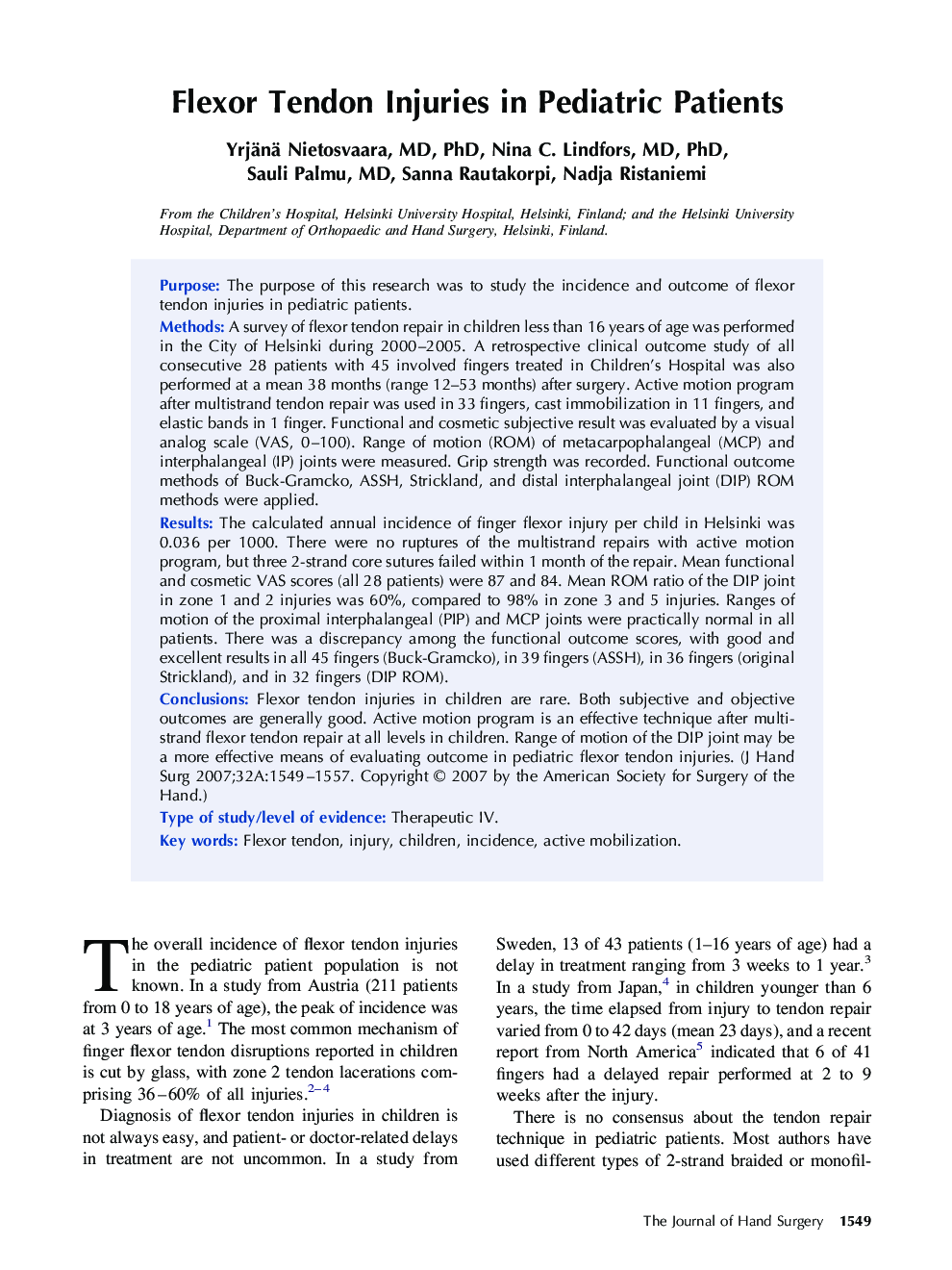| Article ID | Journal | Published Year | Pages | File Type |
|---|---|---|---|---|
| 4068772 | The Journal of Hand Surgery | 2007 | 9 Pages |
PurposeThe purpose of this research was to study the incidence and outcome of flexor tendon injuries in pediatric patients.MethodsA survey of flexor tendon repair in children less than 16 years of age was performed in the City of Helsinki during 2000–2005. A retrospective clinical outcome study of all consecutive 28 patients with 45 involved fingers treated in Children’s Hospital was also performed at a mean 38 months (range 12–53 months) after surgery. Active motion program after multistrand tendon repair was used in 33 fingers, cast immobilization in 11 fingers, and elastic bands in 1 finger. Functional and cosmetic subjective result was evaluated by a visual analog scale (VAS, 0–100). Range of motion (ROM) of metacarpophalangeal (MCP) and interphalangeal (IP) joints were measured. Grip strength was recorded. Functional outcome methods of Buck-Gramcko, ASSH, Strickland, and distal interphalangeal joint (DIP) ROM methods were applied.ResultsThe calculated annual incidence of finger flexor injury per child in Helsinki was 0.036 per 1000. There were no ruptures of the multistrand repairs with active motion program, but three 2-strand core sutures failed within 1 month of the repair. Mean functional and cosmetic VAS scores (all 28 patients) were 87 and 84. Mean ROM ratio of the DIP joint in zone 1 and 2 injuries was 60%, compared to 98% in zone 3 and 5 injuries. Ranges of motion of the proximal interphalangeal (PIP) and MCP joints were practically normal in all patients. There was a discrepancy among the functional outcome scores, with good and excellent results in all 45 fingers (Buck-Gramcko), in 39 fingers (ASSH), in 36 fingers (original Strickland), and in 32 fingers (DIP ROM).ConclusionsFlexor tendon injuries in children are rare. Both subjective and objective outcomes are generally good. Active motion program is an effective technique after multistrand flexor tendon repair at all levels in children. Range of motion of the DIP joint may be a more effective means of evaluating outcome in pediatric flexor tendon injuries.Type of study/level of evidenceTherapeutic IV.
